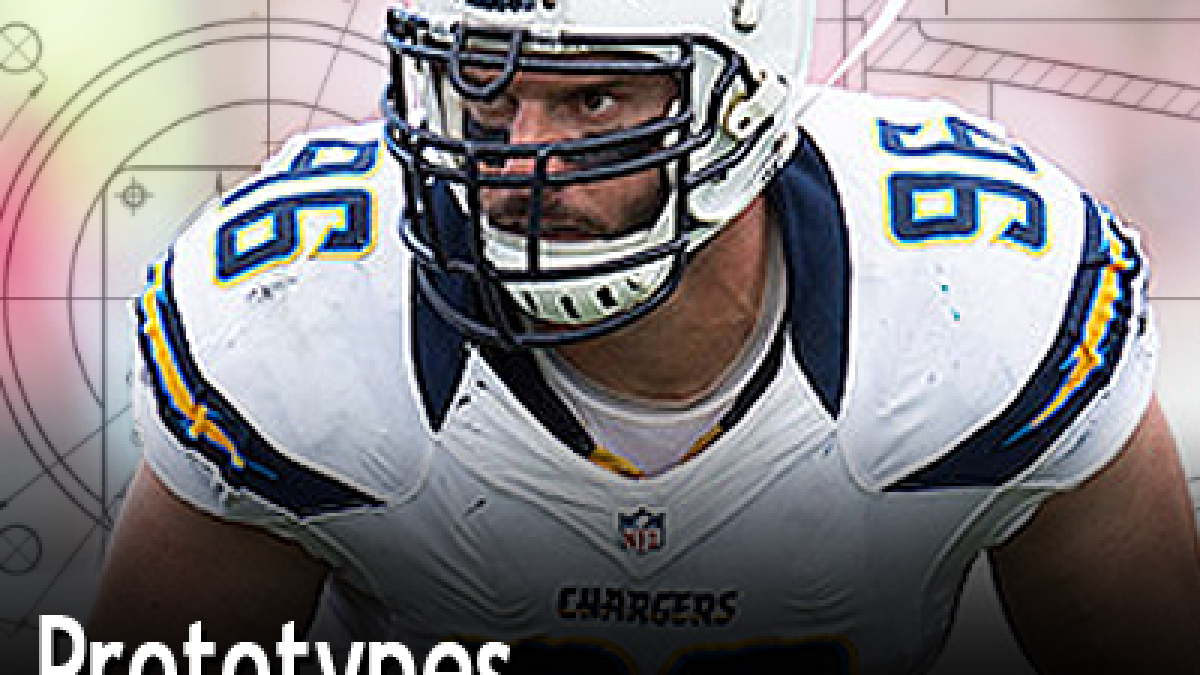 The final D-line technique we are going to be looking at in the prototypes series is the 9-technique, sometimes known as the ‘wide-9’. With the technique numbering system working out from the center, the 9-technique is the widest alignment and is usually reserved for the speed rush, giving a pass-rusher the straightest line to the quarterback at the top of his drop.
The final D-line technique we are going to be looking at in the prototypes series is the 9-technique, sometimes known as the ‘wide-9’. With the technique numbering system working out from the center, the 9-technique is the widest alignment and is usually reserved for the speed rush, giving a pass-rusher the straightest line to the quarterback at the top of his drop.
The 9-tech lines up well wide of the offensive tackle, and outside even the tight end if there is one to that side of the formation. If there is no tight end there the alignment can look completely ridiculous given how much width the end has to try and create the straightest line possible to the quarterback.
We think of the Wide-9 as a 4-3 defensive end position but in reality very few teams that run a four-man line employ their ends in that alignment very often anymore. The Lions were big fans of the alignment a few years back under Jim Schwartz but it didn’t really have the kind of success they were looking for and now it is used far more as a sub-package alignment than one employed on base downs.

That changes if you look at 3-4 teams where the 9-technique is essentially the base alignment for stand up outside linebackers. With three players inside the pair of outside linebackers instead of two inside a pair of 4-3 defensive ends, they have a naturally wider alignment and while 4-3 teams don’t have their ends in the wide-9 in base defense outside of a couple of maverick schemes, 3-4 teams do.

The list of players to have played the greatest percentage of their snaps at the 9-tech spot is dominated by 3-4 outside linebackers. Jarrett Johnson from the Chargers is way out in front as the player to play the greatest percentage of his snaps at that spot, going some way to explaining why he has been one of the league’s best edge-setting players against the run for most of his career. Lining up that wide gives him a certain positional advantage against players coming his way on run plays, allowing him to just attack laterally and spill the run back inside.
In fact, as we see from the list, in the world of the 3-4 outside linebacker the 9-tech spot is not necessarily a pass-rushing construct the way it is for 4-3 ends. Defensive ends line up in that spot because they want the extra width to rush the passer, but it comes at the expense of opening up space inside that can be exploited in the run game. Outside linebackers often want the extra angle it gives them against the tackle or the tight end to actually attack the run and set a hard edge, forcing it back inside to where the help on defense is.
If we go down the list we need to go all the way down to Rob Ninkovich to find the first 4-3 defensive end, and we’re bypassing 15 outside linebackers to get to his name. As the chart shows he has a far bigger spike in the traditional 4-3 end alignments of the 6-, 7-technique and the C-gap.
Calvin Pace also has a slightly bigger spike at those traditional 4-3 end spots, but that is a product of Rex Ryan’s hybrid defense in action.
The Wide-9 as we know it is very much a sub-package alignment in today’s NFL, at least for 4-3 players. It is, however, exactly where a 3-4 outside linebacker lines up, and is his default position in most defenses.
Follow Sam on Twitter: @PFF_Sam


 © 2025 PFF - all rights reserved.
© 2025 PFF - all rights reserved.